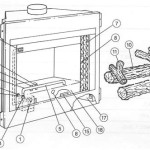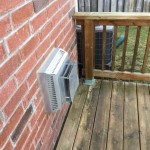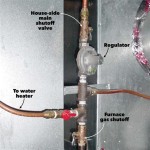Tile Fireplace Surround: A Comprehensive Guide
A fireplace is often the focal point of a room, offering warmth and visual appeal. The surround, the area directly surrounding the firebox, plays a crucial role in both the aesthetics and functionality of the fireplace. Choosing the right material for the surround is paramount, and tile emerges as a popular and versatile option. This article delves into the various aspects of tile fireplace surrounds, exploring their benefits, design considerations, installation nuances, and maintenance requirements.
Benefits of Tile Fireplace Surrounds
The decision to utilize tile for a fireplace surround stems from a multitude of advantages it offers compared to other materials. These benefits extend beyond mere aesthetics, encompassing practical considerations and long-term value.
Aesthetic Versatility: Tile presents an unparalleled range of design possibilities. Available in a vast spectrum of colors, sizes, shapes, and textures, tile can complement virtually any architectural style and interior decor. From classic subway tile to intricate mosaic patterns, the options are limitless. This versatility enables homeowners to personalize their fireplace surround, creating a unique and visually captivating feature within the room. The selection of tile material itself, whether it be ceramic, porcelain, natural stone, or glass, further contributes to the design flexibility.
Durability and Heat Resistance: Fireplaces are subjected to significant temperature fluctuations, making heat resistance a crucial characteristic of the surround material. Tile, particularly porcelain and natural stone, excels in this regard. These materials can withstand high temperatures without warping, cracking, or discoloring. Furthermore, tile is inherently durable and resistant to scratches, stains, and other forms of wear and tear. This ensures that the fireplace surround maintains its appearance and structural integrity for many years, even with frequent use.
Ease of Maintenance: Compared to other materials like wood or painted surfaces, tile is remarkably easy to maintain. Its non-porous surface resists the absorption of soot, ash, and other debris. Regular cleaning typically involves wiping the tile with a damp cloth or sponge. For tougher stains, a mild detergent can be used. The grout lines between the tiles may require occasional cleaning with a grout brush and a specialized grout cleaner to prevent discoloration. However, the overall maintenance requirements are minimal, freeing up valuable time and effort.
Increased Home Value: A well-designed and professionally installed tile fireplace surround can significantly enhance the aesthetic appeal and perceived value of a home. A fireplace is often a desirable feature for prospective homebuyers, and a visually appealing surround can make a lasting impression. The use of high-quality tile and expert craftsmanship further contributes to the perceived value and can be a selling point when the time comes to put the house on the market.
Design Considerations for Tile Fireplace Surrounds
Selecting the right tile for a fireplace surround involves careful consideration of various design factors. The goal is to create a surround that harmonizes with the overall aesthetics of the room while also complementing the style and functionality of the fireplace itself.
Style and Aesthetics: The design of the tile surround should be consistent with the overall style of the room. For a traditional setting, classic tile patterns like subway tile or herringbone may be appropriate. In a modern or contemporary space, larger format tiles or geometric patterns can create a sleek and minimalist look. The color palette should also be carefully considered, taking into account the existing wall colors, furniture, and other decorative elements. Neutral colors like gray, beige, or white are versatile and can complement a wide range of styles, while bolder colors can add a dramatic touch.
Tile Material and Size: The choice of tile material is influenced by both aesthetic preferences and practical considerations. Ceramic tile is a cost-effective option that offers a wide range of colors and patterns. Porcelain tile is more durable and water-resistant, making it a good choice for high-traffic areas. Natural stone tiles, such as marble, granite, or slate, offer a luxurious and unique look but may require more maintenance. The size of the tiles can also impact the overall design. Larger tiles can create a more seamless and modern look, while smaller tiles can be used to create intricate patterns and textures.
Grout Selection: Grout plays a crucial role in the overall appearance and functionality of the tile surround. The color of the grout should complement the tile color and the overall design scheme. Epoxy grout is a more durable and stain-resistant option than traditional cement grout, making it a good choice for fireplace surrounds. The width of the grout lines can also impact the overall aesthetic. Narrow grout lines can create a more seamless look, while wider grout lines can add texture and visual interest.
Mantel Integration: If the fireplace includes a mantel, the tile surround should be designed to integrate seamlessly with it. The style and material of the mantel should complement the tile surround, creating a cohesive and visually appealing feature. The size and proportions of the mantel should also be considered to ensure that it is in balance with the size of the fireplace and the surrounding room. Consider the relationship between the mantel shelf, if present, and the tile extending to the ceiling. How will these elements interact in terms of their lines and visual weight?
Installation and Maintenance of Tile Fireplace Surrounds
Proper installation and regular maintenance are essential for ensuring the long-term performance and appearance of a tile fireplace surround. A poorly installed surround can lead to structural problems, water damage, and aesthetic imperfections. Similarly, neglecting maintenance can result in the accumulation of soot, stains, and other debris, detracting from the overall appearance of the fireplace.
Professional Installation: While DIY tile installation is possible, it is generally recommended to hire a professional tile installer for a fireplace surround. A professional installer has the necessary skills, experience, and tools to ensure that the job is done correctly. They can properly prepare the substrate, install the tile with precision, and seal the grout lines to prevent water damage. A professional installation will also ensure that the tile surround is properly aligned and level, creating a visually appealing and structurally sound feature.
Substrate Preparation: The substrate, the surface on which the tile is installed, must be clean, level, and stable. For masonry fireplaces, a cement backer board is typically used as the substrate. This provides a smooth and durable surface for the tile to adhere to. For prefabricated fireplaces, the manufacturer's instructions should be followed regarding the appropriate substrate. Proper substrate preparation is essential for preventing tile cracking, grout failure, and other problems.
Cleaning and Sealing: Regular cleaning is essential for maintaining the appearance of the tile surround. Wipe the tile with a damp cloth or sponge after each use of the fireplace to remove soot and ash. For tougher stains, use a mild detergent and a soft brush. The grout lines should be cleaned periodically with a grout brush and a specialized grout cleaner. Sealing the grout lines with a quality grout sealant can help to prevent staining and water damage. The sealant should be reapplied every one to two years, depending on the type of sealant used and the frequency of fireplace use.
Inspecting for Damage: Periodically inspect the tile surround for any signs of damage, such as cracks, chips, or loose tiles. Minor cracks and chips can often be repaired with epoxy or other repair products. Loose tiles should be reattached using tile adhesive. If the damage is extensive, it may be necessary to replace the damaged tiles. Addressing damage promptly can prevent it from escalating and causing further problems.
In conclusion, tile fireplace surrounds offer a versatile and durable solution for enhancing the aesthetic appeal and functionality of a fireplace. By carefully considering design factors, ensuring proper installation, and implementing a regular maintenance routine, homeowners can enjoy the beauty and benefits of a tile fireplace surround for many years to come. The selection of tile, the integration with the mantel, and the ongoing care are all critical components of a successful tile fireplace surround project.

Fireplace Tiles Classique Floors Tile Portland Or

Why Don T You Tile Your Fireplace Sunset

10 Fireplaces To Warm Your Heart
/102661017-6a23c040b71843379188b96b21ac1a08.jpg?strip=all)
How To Tile A Fireplace

How To Tile A Fireplace Surround And Hearth Build Basic

Fireplace Tile Ideas Designs To Inspire You

20 Nature Loving Fireplace Ideas Design Beach Style Living Room Tile Surround

Fireplace Tiles Classique Floors Tile Portland Or
Fireplace Tile Surround 5 Decorative Mantel Tiles 2024

Tile Around Fireplace Ideas Design Surround
Related Posts








